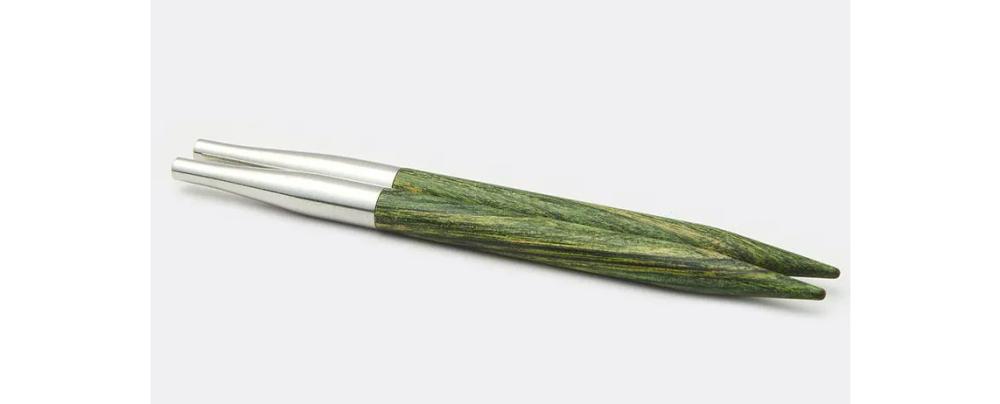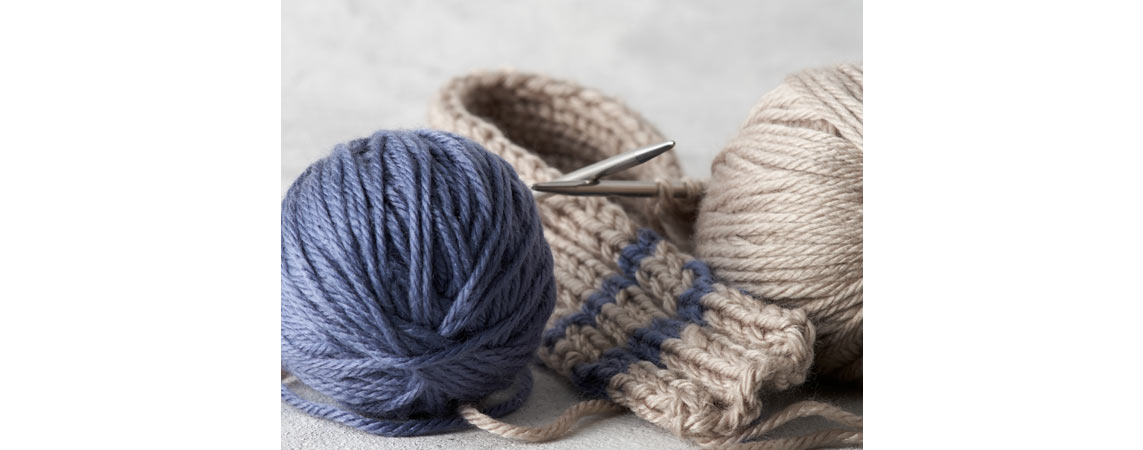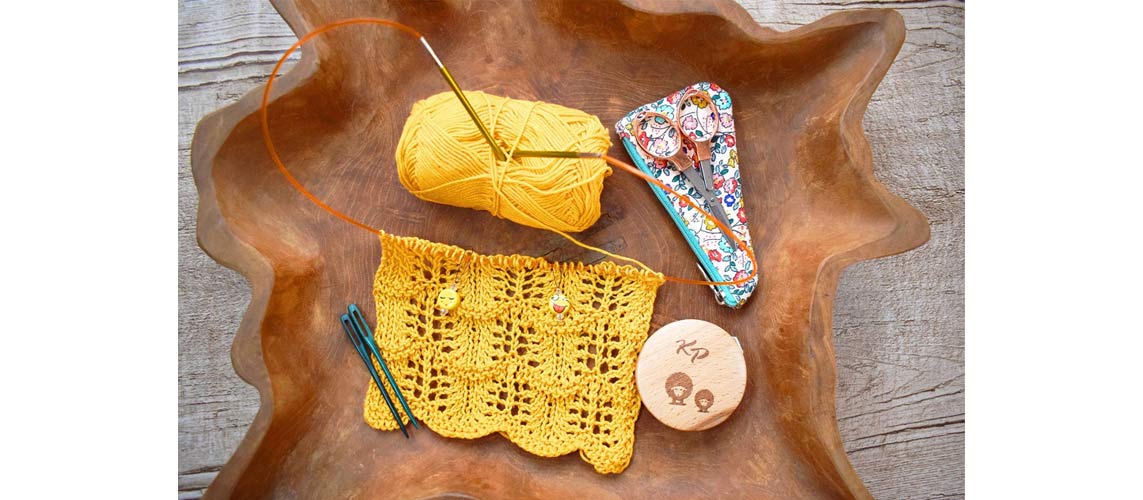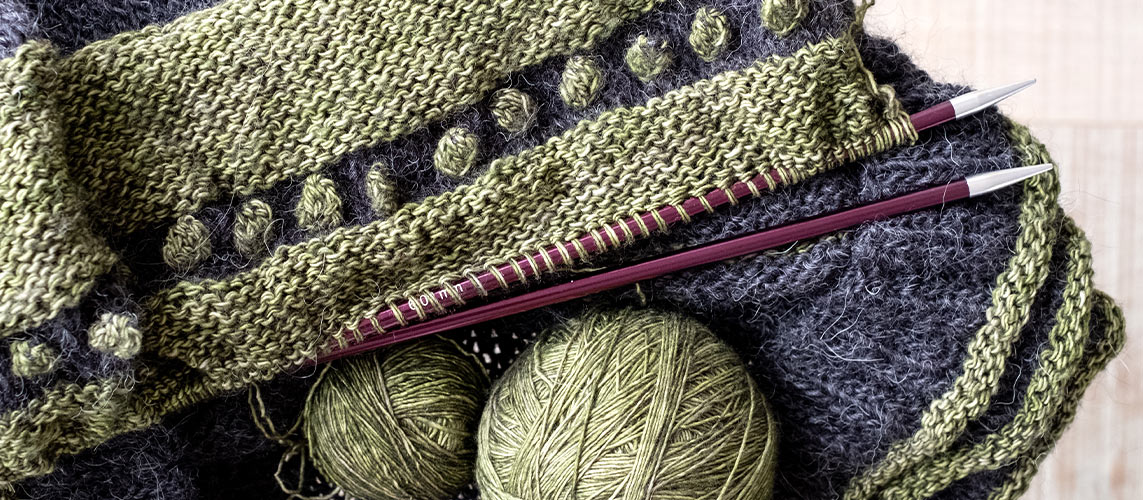Prepare yourself to discover the true magic of your knitting needles as we explore two essential techniques that every knitter should master: SSK (Slip, Slip, Knit) and K2tog (Knit Two Together). Both of these methods involve decreasing stitches from two to one. But why do we have two different techniques? The short answer is: Learning and mastering the SSK and K2tog decreases will open up a world of creativity and versatility for your knitting projects. These techniques are crucial in transforming your designs from ordinary to extraordinary.
Why are there Different Techniques to Knit Two Stitches Together?
One of the most significant reasons to master SSK and K2tog is their ability to create exquisite symmetry and shape your knitwork. These decreases allow you to design your projects with precision, whether it's creating a perfectly fitting sweater sleeve, decreasing for the crown of a hat, or creating graceful curves in a shawl.
No matter the type of knitting needles you choose to work with - straight, circular, or double-pointed - you can easily employ SSK and K2tog techniques wherever needed. They also function consistently across all knitting needle types - from straight to circular and double-pointed. By understanding and executing both techniques, you can achieve beautifully balanced and visually appealing designs that are sure to impress.
SSK and K2tog are genuine secret weapons when it comes to lace knitting. They have the power to create distinct diagonal lines and motifs that make lace so enchanting. You can navigate complex stitch patterns effortlessly, thus creating stunning shawls, hats, socks, or snugly fitting tops.
Moreover, SSK and K2tog come to your rescue when you need to shape cuffs, sleeves and collars; these decreases ensure your finishings and edges are neat and free from unsightly bumps.

Knit two stitches together (K2tog)
To "knit two together" (K2tog) is the most common knitting technique to decrease stitches and create shaping in your project. You simply knit two stitches together as if they were one stitch.
When you work a K2tog decrease, you quickly become aware that the resulting stitch slants to the right. This decrease can ensure a smooth and visually appealing line in your knitting. But you typically use it on the right side of the work or when shaping requires right-leaning decreases. In return, using only K2tog decreases would create a diagonal line in your work that may add more movement and flow to your project in some projects.
Here's how to execute the K2tog:

Step 1: Hold the working yarn in your right hand and the needle with the stitches in your left hand.
Step 2: Insert the right-hand needle into the next two stitches on the left-hand needle, going from left to right as if you were going to knit them individually.
Step 3: Wrap the yarn around the right-hand needle from back to front, just like working a regular knit stitch.
Step 4: Pull the right-hand needle tip with the yarn over through the two stitches you want to knit together.
Step 5: Slip the newly formed stitch on the right-hand needle.
Sometimes you also come across a variation of the K2tog decrease that produces a slightly different result: (K2tog tbl) is a twisted decrease that may be more decorative where required. Instead of inserting the right-hand needle from left to right, you insert it through the back loop of the two stitches on the left-hand needle.
How to knit two stitches together with the SSK method?

SSK means “Slip, Slip, Knit” and is the twin sibling of the K2tog decrease, although it’s not the same. Contrary to the above-mentioned technique, SSK will slant your decreased stitch to the left.
Step 1: Slip one stitch knitwise onto the right-hand needle,
Step 2: Slip another stitch knitwise onto the right-hand needle
Step 3: Insert the left-hand needle into the front loops of the slipped stitches and slip them back. You have now changed the direction of these stitches.
Step 4: Knit the two stitches together through the back loop.
This left-leaning decrease is typically used on the left side of the work. The SSK decrease creates a mirrored effect when used in conjunction with K2tog. It will help to balance the overall shaping of your piece and maintain symmetry in the fabric.
How to best combine these decreasing techniques?
The combination of SSK and K2tog empowers you to create intricate patterns, smooth transitions between stitch sections, and customized designs tailored to your unique vision.
You usually combine both methods when working on projects that require shaping, such as decreasing the waist shaping in a sweater. In bottom-up sweaters, these decreases are your go-to methods to shape the slope of the shoulders. By using K2tog on the right side and SSK on the left side, the decreases of your raglan project slant in opposite directions, mimicking the natural form of your shoulders giving your sweater a natural drape.
But the K2tog and SSK techniques come particularly handy when knitting sock heels and toes, as they form smooth and symmetrical decreases on each side of the work. These decreases allow you to shape the heel and tows while maintaining a consistent stitch pattern and ensuring a snug fit.
In lace knitting, K2tog and SSK decreases are usually combined to balance out intricate and delicate patterns. The choice between K2tog and SSK depends on how they interact with the surrounding stitches, but these two decreases are essential if you wish to design stunning lacework, such as leaves, chevron or zigzag patterns.

In certain situations, the way the stitches slant due to the decreases is purely for aesthetic purposes and may not significantly affect the functionality or structure of the final garment. However, in projects where shaping or stitch patterns play a prominent role, such as in lacework, paying attention to the slanting direction becomes vital as it contributes to the overall unity and consistency of the fabric.
With this dual stitch decreasing method at your disposal, your knitting will become truly three-dimensional. Take your time to practice with your knitting needles and some yarn to perfect the K2tog and SS techniques; they hold the key to unlocking a universe of possibilities in your knitting repertoire. If you want to explore knitting increases, check out our guide on how to increase a stitch in knitting.












